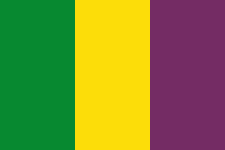La Tebaida, Quindío
| La Tebaida, Quindío | |||
|---|---|---|---|
| Municipality and town | |||
| |||
 Location of the municipality and town of La Tebaida, Quindío in the Quindío Department of Colombia. | |||
| Country |
| ||
| Department | Quindío Department | ||
| Time zone | Colombia Standard Time (UTC-5) | ||
.svg.png)
La Tebaida (Spanish pronunciation: [la teˈβaiða]) is a municipality in the western part of the department of Quindío, Colombia. It is located 17 km southwest of the departmental capital Armenia.
In 2005 it had an estimated population of 30,300, of which 27,000 live in the main urban zone.
Geography
Localizacion fisica del distrito, departamento o municipio: Municipio de La Tebaida, Deparatamento del Quindio, El municipio esta ubicado al occidente del departamento con su área urbana a 4° 27' latitud norte y 75° 47' longitud oeste; Su punto más septentrional se ubica en el puesto de policía de Murillo a 4° 29' 70”, al sur a 4° 23´80” en el valle de Maravelez donde el río Quindío y el río Barragán forman el río La Vieja, al oriente igualmente en el puesto de Murillo a 75° 44´ 70” y al occidente 75° 54´ 00” en los límites con el municipio de La Victoria Valle del Cauca. Su temperatura media es de 23°C que lo convierten en el municipio más cálido del departamento producto de su altura de aproximadamente 1200 msnm. Su extensión territorial es de aproximadamente 89 km.
History
La Tebaida was founded by Luis Arango Cardona, born in Manizales on February 19, 1879. He was one of the first people to undertake systematic archaeological studies of the indigenous tombs (guacas) in Quindío. His research led to the publication in 1924 of his two-volume book Recuerdos de la guaquería en el Quindío, the first study of its type in Colombia.
In 1899 Arango and his brother had started a farm with an area of 6.7 km² in the south of Armenia. They named their farm La Tebaida, the name of a region in Egypt where Christian monks had sought solitude for contemplation and prayer. In order to increase the productivity of their land, they divided it into 10 hectare blocks. The brothers distributed these to approximately 60 families, who paid the owners with a proportion of their production.
Arango decided to set aside a portion of his farm so that all of the tenants could build their houses in a central location. He laid out a street plan including parks and the principal plaza, located one block from the main farm house. The sections went on sale on August 14, 1916, now considered the foundation date for the town. Within one week, 130 sections had been sold at a price of 20 pesos for each one. A competition was held to choose the name of the settlement. Although more than 1,000 names were suggested, the most popular choice was the original name of the farm.
In 1917 the settlement was elevated to the status of a corregimiento of Armenia. A census in that year showed there were 478 inhabitants (254 men and 224 women), including 45 married couples and 55 couples living together without being married.
The municipality of La Tebaida was created in 1953 with the separation of 85 km² from Armenia. The first mayor of La Tebaida was Felipe Santiago Mejia. He helped this town get water!
External links
- La Tebaida - Edén Tropical del Quindío. Official web page of the city council (in Spanish).
Notes
References
Loaiza Piedrahita, Oscar (2004), Los corredores del tiempo: Guía turística por la historia del Quindío. ISBN 958-33-7088-6. Book in Spanish on the history of the municipalities of Quindío until the foundation of the department in 1966. The local history is placed in the context of wider events in Colombia.
| ||||||||||||||||
Coordinates: 4°27′N 75°48′W / 4.450°N 75.800°W

